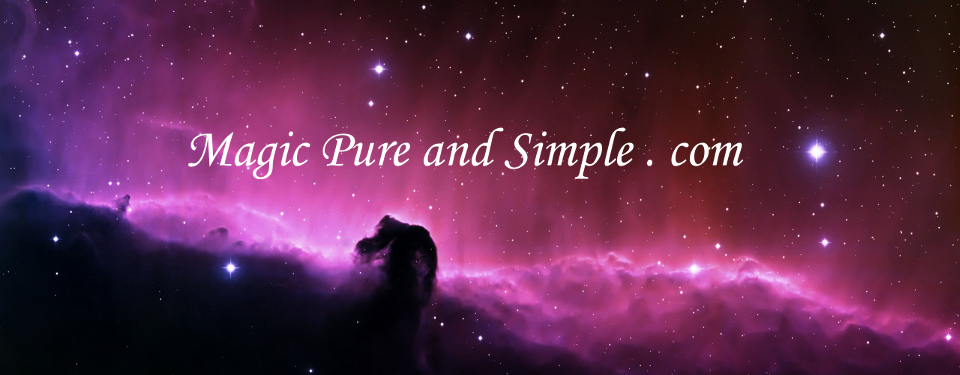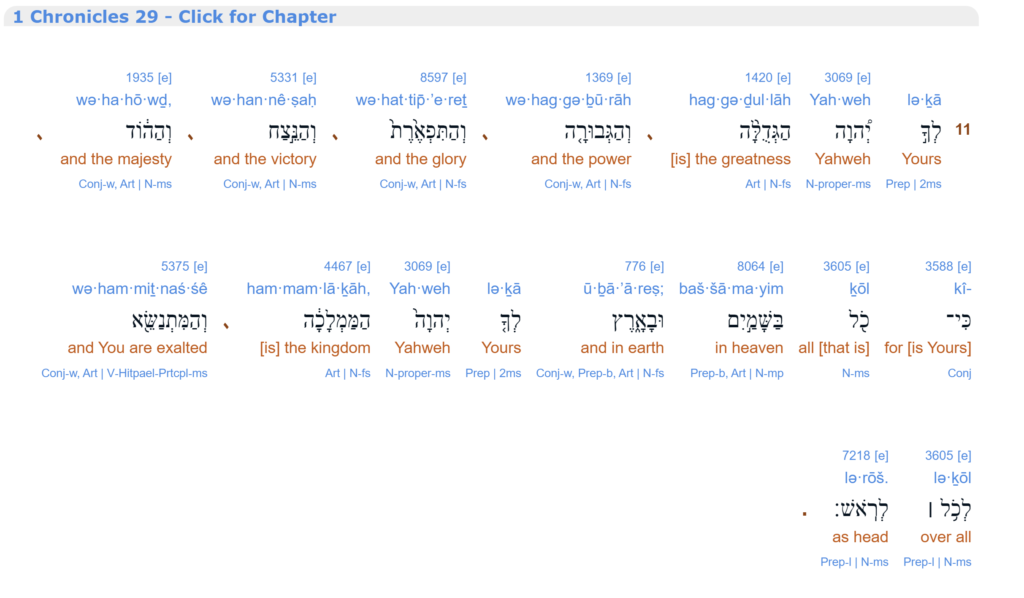This is the first part of the banishing ritual known as the Lesser Banishing Ritual of the Pentagram and it should also be the last part of the same. It involves spoken words and hand signals and can be accompanied with visualization. The visualization gives one the sensation of energy flowing through the energy body of the practitioner.
The words which are normally included are: “Atah Malkuth we Geburah we Gedulah Leolam Amen.”
For anyone who understands Hebrew, this phrase is immediately recognized as similar to some words which accompany the Lord’s prayer. The phrase which is often used to end the Lord’s prayer is “Yours is the Kingdom, the power and the glory, forever and ever amen.”
This phrase is known as the doxology or short hymn and was actually a very late addition to Matthew 6:13 in the Bible. The original texts did not include this phrase so in modern bibles it is omitted. Even still, having been omitted from the bible it is still recited as part of the Lord’s Prayer.
When I originally learned this phrase I immediately noticed that it didn’t actually say “yours is …” it said “you are the kingdom, the power and the glory forever amen”. In Hebrew, there are two ways of saying “yours”: “lekha” and “shelkha” which is a late contraction of “Yesh lekha”. So why did it begin with “Atah” which effectively means “you are…”?
I even looked up the doxology in the Hebrew biblical text known as Chronicles and found the following text which contains many of the names of the sphiroth from the tree of life.
Lekha – yours
Yahweh – God
ha gedulah – Is the greatness (chesed)
we ha geburah – and the power
we ha tipheret – and the beauty
we ha netzakh – and the victory
we ha hod – and the splendor
Key kol Ba Shamaim we ba eretz – because all in the heavens and in the earth
lekha – is yours
hammelakha – it is the kingdom (malkuth)
Other than the supernal triad and Yesod, this prayer tracts the descent of light through the sphiroth of the modern tree of life.
But why does it begin with Atah?
Before I start let me address a comment that was made. I write Atah and I have noticed other people spell this Ateh. In Modern Hebrew, the most common pronunciation is “Atah” for you masculine and “At” for feminine. In languages like Hebrew, vowels are not written down and really do not feature as much in the minds of speakers. I recently had someone struggle to tell the difference between “Hassle” and “Hustle” for this very reason. Since helper vowels were added to Hebrew for learners this word has been written with Qametz which is a long “a” sound, not an “e” sound. In Strong’s concordance, it appears with “a” as well. So Atah is more correct, but in reality vowels in this language do not matter so much. Thanks for trying to keep me on my toes though.
My first thought was that the translator of this prayer had failed to understand how different the language of Hebrew is from English and struggled to translate the phrase from English back into Hebrew until I noticed the phrase in Eliphas Levi’s Dogma and Ritual of High Magic. Eliphas Levi’s writings have a huge influence on the Hermetic Order of the Golden Dawn and so this was probably why it became used here.
Crowley writes in Sepher Sephiroth Subfigura D, in the section called 418 about Abrahadabra that Atah means the microprosopus. This is the lesser countenance (or face) of God and according to Qabalah Denudada [1678] Christen Knorr von Rosenroth is Tiphereth.
The Sign of the Cross adopted by Christians does not belong to them exclusively. This also is kabalistic and represents the oppositions and tetradic equilibrium of the elements. We see by the occult versicle of the Lord’s Prayer, which we have cited in our “Doctrine”, that it was originally made after two manners, or at least that it was characterized by two entirely different formulae, one reserved for priests and initiates, the other imparted to neophytes and the profane. For example, the initiate said raising his hand to his forehead, “For thine,” then added “is,” and continuing as he brought down his hand to his breast, “the kingdom,” then to the left shoulder, “the justice,” afterwards to the right shoulder, “and the mercy” – then clasping his hands, he added, “in the generating ages.” Tibi sunt Malkuth et Geburah et Chesed per aeonas – a Sign of the Cross which is absolutely and magnificently kabalistic, which the profanations of Gnosticism have lost completely to the official and militant Church. This Sign, made after this manner, should precede and terminate the Conjuration of the Four.
The qabalistical cross accompanies the pentagram rituals and the pentagram rituals appear to use the rivers of eden which flow through only 4 sphira to try to lift the candidate up on the cross so his feet can be firm on Malkuth while his head rests in tipheret and to secure him in place his right hand is nailed to geburah and his left to chesed. If Eliphas Levi is to be consider it is meant to be a balancing ritual that emphasises the equilibrium of the elements, but he pushes this idea of an equal armed cross. In the Hermetic Order of the Golden Dawn there is a break from his idea of an equal armed cross, possibly because they are working more on the qabalistic imagery I just mentioned.

